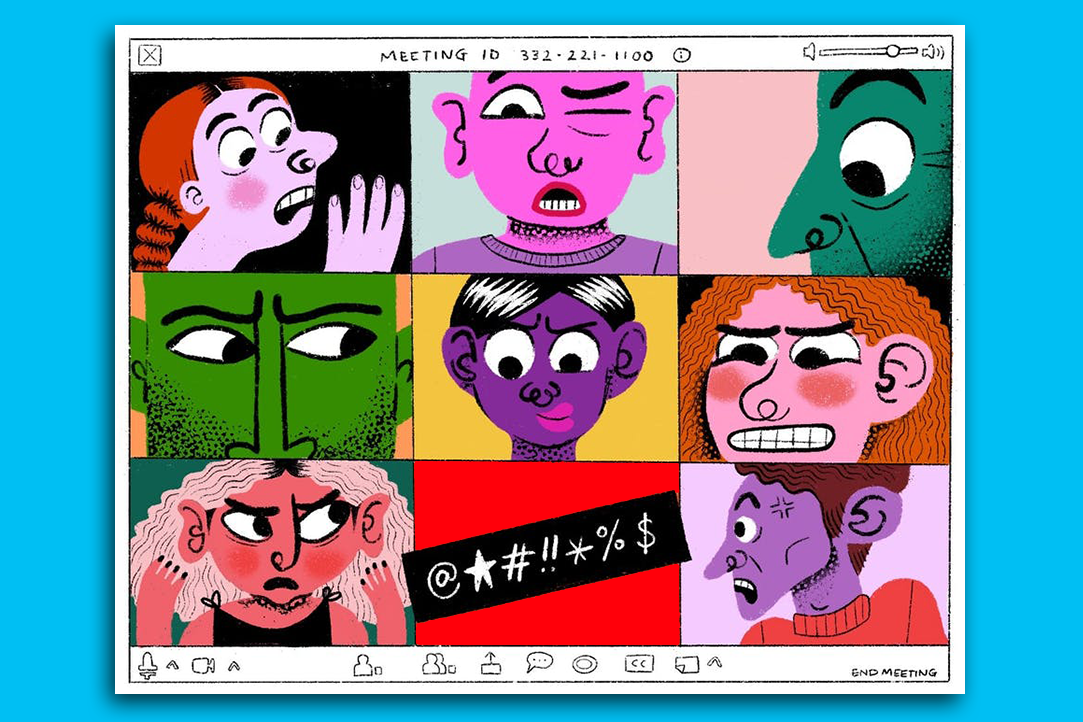“Zoom-Bombing”: How Trolling Invaded On-line Conferencing And How to Cope It

In circumstances of self-isolation, people still have to communicate. Most of communication - personal conversations, business meetings and lectures now occur via video-conferencing services. Such conversations, unfortunately, are being ruined sometimes by internet-trolls. Zoom, the most popular video-conferencing platform, allows contacting large groups of people at the same time. This service does not have required protection system, which makes so called Zoom-bombing a piece of cake for trolls and scammers.
Online trolling is growing steadily with the development of various internet services, and the more reaction the trolls can capture from their victims, the more they seek to create new ways of pranking people online. Thus, trolling occurs often in social media, online videogames, and video-chats, of course - if the pranker can not only read or hear the victim’s emotional response, but see their facial expressions, a troll feels truly satisfied. When quarantine came in and we transferred our communication to Zoom, where anybody can join an any conversation, having an invitational link, demonstrate anything from their desktop and broadcast audio, trolls have disguised a big potential for their deeds. So, let’s uncover some of the most popular types of “Zoom-bombing”.
Sound Abuse
Zoom allows users not only to transmit voice via microphone, but it is also possible to run sounds from one’s computer. It provides trolls a really entertaining prank method - they just run sounds on their computer and interrupt the conversation this way. The sound transmitted can vary: popular songs, distorted screams, toilet sounds and so on. Also, prankers sometimes create a special sound racks, that contain separate phrases from a person - this way they can communicate by pressing buttons connected to appropriate phrases.
Screen Sharing
Literally, anything can be shown to the whole chat-room via screen sharing option. Prankers usually turn on a video of inappropriate, offensive or mature-only content and wait for the feedback. This is the most rewarding way of Zoom-bombing for a troll, since it causes immediate reaction, but unfortunately for them, being kicked out of the room is inevitable.
Passive Trolling
With that mentioned, the threat prankers have on your conversations is quite significant. No one wants their online-class or job interview to be interrupted by this. Now, let's consider the useful ways of coping with Zoom-bombers.
- Send invitational link directly to people you want to meet - this will help to minimize the number of people that can possibly join your conversation.
- Protect your conversations with a password - it is a simple yet the most useful feature - never create a Zoom meeting without protecting it with a password.
- Do not use the same room for regular conversations - not changing the room URL is risky - once attacked by trolls, the conference will stay under threat forever, since they still have the link.
- Utilize the “waiting room” option - this way host can check the newcomers before letting them enter the conversation.
- Tell your partners to use their real names - this simple step can become a vital tip for saving your conversation from prankers. Let inside only those who you know and who is awaited.
- Do not allow screen-sharing for strangers - avoid seeing unwanted things by controlling which screen is being shared and why.
Internet trolling is here to stay, no matter all the measures taken. However, it should not be an obstacle for you to contact your friends and colleagues online during this delicate time. Keep on Zoom-ing and don’t let prankers become a problem for you.
Text by
Eduard Oksem
